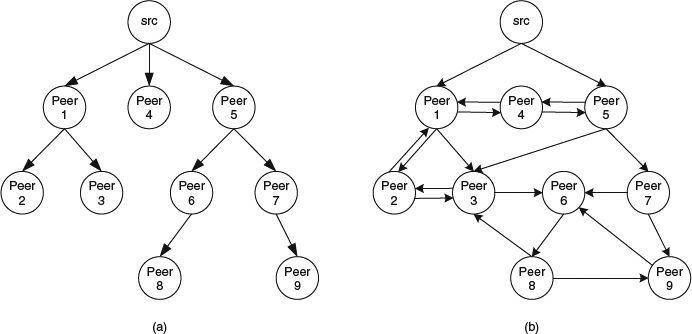10.3 Peer-to-Peer 3D Video Streaming
The server–client streaming paradigm has its limitation owning to the bandwidth bottleneck and is not scalable to support a large group of end users. The problem will become worse for the multi-view video streaming service. It has been demonstrated that the peer-to-peer (P2P) video streaming can significantly alleviate the computation load and bandwidth requirement experienced in a centralized video streaming system. Basically, the P2P streaming system can be categorized into two different approaches: tree-based approach and mesh-based approach, as illustrated in Figure 10.7.

Figure 10.7 Peer-to-peer streaming approaches (a) tree-based, (b) mesh-based.
The tree-based approach will construct a structured network in a tree topology. The server will serve as the root of the tree and each peer will play both the role of the parent and child node. The video delivery path is built by starting from the server and relaying the streams by peers through the connected nodes, which can provide a low latency video delivery, and thus is suitable for video broadcasting. The advantage of this approach is a shorter join time for a new peer since there is no peer discovery phase needed during the initialization. However, the peer leaving will bring extra handling for the tree reorganization, especially for a peer serving as a parent node who needs to link its ...
Get 3D Visual Communications now with the O’Reilly learning platform.
O’Reilly members experience books, live events, courses curated by job role, and more from O’Reilly and nearly 200 top publishers.

